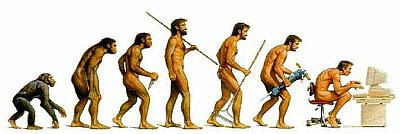This is my favorite time of year. The weather is perfect; the leaves are turned color, the humidity is down, not too hot, and not too cold. And most of all, it’s my favorite time of year because it’s football season! I’m a huge fan of football, and I’ve loved it ever since I was a kid. I was blessed as a kid to be able to participate in a Pop Warner youth football league as a kid, and that passion that I had for the game grew so much that I continued to play football all the way to the college level. It was a glorious journey full of highs and lows, big games and bad games, blood, sweat, tears, the long road back from surgery-twice, tons of friendships, great coaches, and lots of miles put on the car by my parents! But as Dierks Bentley says, “Every mile a memory.”
Go Blugolds! |
 |
| Thanks for doing laundry Mom! |
Many football fans, nowadays, participate in fantasy football leagues. These are online leagues where you can have a draft of which NFL players you want on your team, and these players can score you points based on how well they play and how good their stats are. The more points your players get you, the better your chance of winning! To be honest, I really don’t get into these leagues a lot. I’d rather just enjoy the game for what it is, rather than putting too much stock in to the statistical side of the game. In these fantasy football leagues, participants try to pick the best players and accumulate the best line-up of players, giving them the best opportunity to win against someone else’s team that they assembled.
Now that I’ve bored you with my life story and wasted the last few minutes of your life, you’re probably wondering what any of this has to do with fitness. And so am I. Just kidding! I’ll put my genius to work and bring together a great read for you.
Being in the fitness industry, I try to put together an exercise plan that will benefit each client individually the best, much so like trying to assemble the perfect team. Each and everyone has their own needs which are different than the person next to them, depending on their goals, interests, health, exercise history, injuries, occupation, muscle imbalances, and many other reasons.
Some people lay in bed at night and dream of anything from their top 5 bands, or foods, or movies, or celebrity crushes, or their Christmas list. I, on the other hand, dream of my favorite exercises and which one’s I think are the most valuable-in a very general thought process. Perfectly normal, right?
| Mr. Roger's Land of Make Believe |
Let’s make believe that there is a "Fantasy Football Exercise" league. And I’ll gather a team of, at this point in my young career, what I believe to be the five most beneficial exercises, stretches, and so on.
I feel that no matter what the person’s specific goal is, all they want is to look and feel better. Sure, there may be a goal of improving quality of life, rehabbing an injury, getting stronger, losing weight, or improving performance, but that’s where the specificity of the exercise prescription comes in. What I’ll do with my team of five exercises is produce a team that’s capable of improving one’s health, and helping you look and feel better.
1 Push-up!
The benefits are practically endless with this one. Not only does it improve upper body “push” strength, it also improves shoulder health (with proper form), stability in the scapula, and my favorite-core stability! Forget the fancy crunches and sit-ups, if you can’t do a push-up very well, it may be due to some core weakness.
Notice in the video that his body stays in a straight line from head to toe, and the hips don’t sag down or peak up. Elbows should be at a 45 degree angle to the upper body, and lead with your chest as you lower yourself down.
If you aren’t strong enough to do a regular push-up (off the knees) with proper form, there are many ways to modify it to make it safe, productive and beneficial. Try doing them with your arms on a bench, or even on the wall. This will decrease the force that gravity will have on your body, making it easier to press yourself up! Also, don’t ever resort to doing them on your knees, as this will take away the integration of the core stability. If you want to increase the intensity, you can try push-ups with your feet elevated on a bench, push-ups with a T pose, clap push-ups, or band resisted push-ups.
2 Face Pulls
http://www.youtube.com/watch?v=k9UEDWMJ5T4
Face pulls are a great upper back exercise that promotes stability and health in the shoulder and rotator cuff muscles. These can be done with resistance bands or cable towers in your health club. You’ll notice, it’s the same movement as a push-up, except you’re pulling instead of pushing. Face pulls work the antagonist (opposite) muscle that a push-up will work, and induce retraction ability in your scapula (shoulder blades). Face pulls can help improve range of motion (ROM) in the shoulder joint, and they can also help your strength in push-ups, bench press and other key “push” exercises.
3 Squats!
http://www.youtube.com/watch?v=Pg406rGg8b0&p=78F8A868E11C551D&playnext=1&index=22
Squats are great for building lower body strength and stability in the hips, which is crucial for knee health. Some of you may be thinking “I can’t do this one, it hurts my knees when I do squats.” Most knee pain is from poor movement patterns with the squat, which can take a toll on the hips and knees. What I find works best is start with what is called goblet squat (watch video), as this will integrate tons of core strength while improving appropriate groove patterns with the hips and knees, while also improving lower body strength. If executed with proper form, squats can help decrease pain in the joints of the lower body, and they can even improve bone density if they are done with (light, moderate, or heavy) resistance!
4 Step-up, split squat, or lunge
http://www.youtube.com/watch?v=ttmh8_7lkXc&feature=related
http://www.youtube.com/watch?v=nyg1cVYByIo
http://www.youtube.com/watch?v=dJ95qwNaD78
This is another great exercise progression that I think is a must have in any exercise routine. This is a one leg exercise that will improve the stabilizer muscles groups more so than a squat can. This is important because, if you think of it, walking is done on one leg. And when people start to develop chronic hip and knee pain, it’s important that they work to improve the activation of the stabilizer muscle groups (which correlate with the knees). Each joint is a kinetic chain that works together, relying on each other for stability or mobility (depending on the joint). When you take a lower body bilateral movement (a squat) and turn it into a lower body unilateral movement (step-up, split squat, lunge, or one leg squat) you crank up the activation of your stabilizer muscles a lot more. A squat is great for developing strength, but a lunge variation is great at developing stability. Both are a must!
5 Intervals
Intervals are a workout you can do on any piece of cardio equipment, or even outside of the gym with or without any equipment (or gym membership for that matter). What an interval is, is a ratio of work:rest. This could be 1:2 ratio, or if your cardiovascular systems aren’t as optimal, try something easier such as a 1:3, or 1:4 ratio. Let’s take a look at the 1:2 ratio for an example. Let’s say you really like using the treadmill. You could do a 20 second jog/run for the work, and then 40 seconds for the rest interval. The key here is to have the work period be on the high end of your intensity capabilities so that by the time you get to the end of the 20 seconds (or whatever interval you choose) you need that rest. You could continue this for 15 minutes or as tolerated, then finish up the rest of the recommended hour of aerobic activity 3-5 days a week with low intensity cardio (50-70% heart rate reserve). You could also do the intervals on a bike, step-mill, elliptical, or rowing machine. Intervals are beneficial because they get your heart rate (HR) in the aerobic zone (improves oxygen utilization), and recovery zone (improves circulation and brings nutrients to the muscles), giving you benefits of each. Also, tons of recent research has shown that interval training is the fastest and most efficient way to burn fat, as opposed to steady state aerobics (i.e. walking). And, the kicker is that interval training induces what is called Excessive Post-exercise Oxygen Consumption (EPOC), which will keep you burning calories faster and longer, long after you are done exercising! I don’t know about you, but I like the idea of myself burning fat calories (at a higher rate than usual) while I’m sitting here typing this! This seems like an easy way to burn fat!
6 Spiderman walk with overhead reach
http://www.youtube.com/watch?v=1ar0g-ztdVg&feature=related
This is a dynamic stretch that I really like because it hits target muscles and joints that most people (due to lifestyle habits) need to work to improve mobility and ROM in. This can improve the length of the hip flexors and hip adductors, while incorporating thoracic spine rotation with depression in the scapula. Plain and simple, it’s a great exercise! Try this exercise before you perform the above exercises to attain a greater training effect. There are ton of stretching and mobility exercises that I strongly believe are very beneficial to do before you exercise, but that’s a topic for another post! This stretch is a good start.
The down-low on the Sitch (situation)
As you can see, there is nothing fancy with the exercise selection. These are all basic exercises that you inevitably use in your daily activities. The goal here really is to just get efficient at them and learn proper movement patterns to keep your body healthy while giving yourself a great workout. So, I can assure you, those complex exercises and workouts you find online by some knucklehead isn’t very beneficial-no matter what your goal is. It doesn’t matter if you’re King Kong in the weight room, or if you are just realizing the benefits of strength training and want to get started. Keep it simple, and modify the intensity (progression, resistance, rest periods, etc.) of each exercise to fit your goals and individual fitness level and you can get effective results with these simple exercises.
There you have it, that’s my fantasy exercise line-up!





.jpg)


















